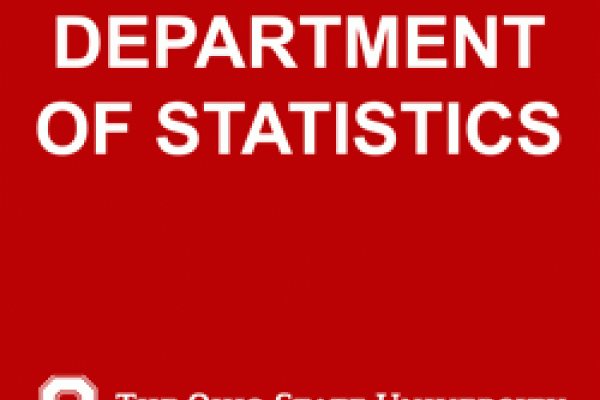Statistics Graduate Students Win 2013 Capital One Modeling Competition

The Ohio State team of statistics graduate students Xin Huang, Andrew Landgraf, Liubo Li, Srinath Sampath and Ran Wei, under the direction of their faculty advisors Dr. Prem Goel and Dr. Chris Holloman, won the 2013 Capital One Modeling Competition this past Friday.
This was the second year for the competition and the first year that Ohio State participated in it. In September, Capital One invited select graduate programs to form teams for the competition. The competition attracted 32 teams with a total of 141 students from 10 schools. After being selected as one of the top six teams based on their approach to the problem and the accuracy of their predictions, the Ohio State team traveled to the Capital One Corporate Headquarters in McLean, VA, where they spent an evening meeting with Capital One associates. The other finalists included teams from Texas A&M University, Southern Methodist University, the University of Delaware and two teams from Virginia Tech. The next morning, the teams made their final presentation before the Capital One Executive Judging Panel comprised of statisticians and marketing specialists. Each individual on the winning team receives a cash prize of $1,000.
The modeling challenge was to develop a strategy to assign merchant coupons to customers of Capital One’s credit card business, with a strong emphasis on creating connections between merchants and new customers through the optimal assignment of coupons. An additional challenge was that the training data came from heavy spenders, while the team had to predict the habits of light spenders to qualify for the finals. The stringent cost/benefit function also required the final offer of coupons to every customer to be made very precisely.
The team describes their approach to the problem saying, "The OSU team adopted the powerful matrix factorization method that supported the winning entry for the famous Netflix Prize in 2009 as their starting framework for the Capital One challenge and made several modifications to it. Some of you may recall that both matrix factorization and the Netflix competition were discussed in the Data Mining and Statistical Learning seminars. In the context of the Capital One challenge, the matrix factorization approach was used to create a 20-dimensional numeric profile of every merchant and customer based on their intrinsic characteristics, and then to find the nearest merchants to every customer in this 20-dimensional space based on inner products."
